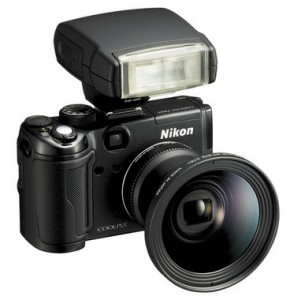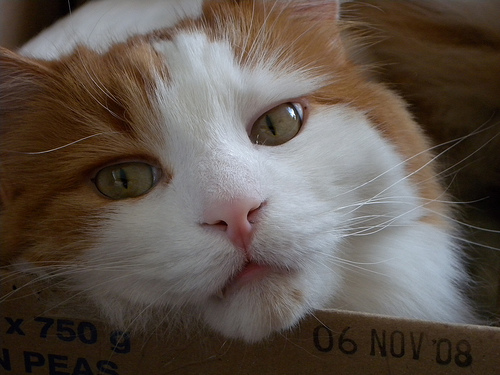Nikon Coolpix P6000 - Sublime, sub-pro.
 Monday, January 19, 2009 at 10:54PM
Monday, January 19, 2009 at 10:54PM  CoolPix P6000: Small but flexible
CoolPix P6000: Small but flexibleBy Gadjo Cardenas Sevilla
Professional photographers or even serious enthusiasts don’t have too many choices when it comes to compact digital cameras that offer advanced features as well as manual controls.
High-zoom point-and-shoot cameras are bulky because of their supersized lenses while pocket point-and-shoot models really fail to offer a range of features outside of their basic menus.
The sweet spot in this segment is a pocket camera with a fixed zoom lens, great optics and the ability to manage most of the manual settings so that you can get color-accurate and clear photos without toting your huge DLSR and a heavy lens.
More on the Nikon P6000 after the break
Pro Photography in your Pocket
The CoolPix P6000 is the professional point-and shoot from Nikon and is poised to challenge Canon’s distinguished G10 and Panasonic’s LX3 cameras in the same segment. Its costs nearly as much as an entry-level DSLR but offers the simplicity of a point-and-shoot with a lot of advanced features. This isn’t a substitute DSLR but an ideal second camera for the budding photo enthusiast.
Boasting a mind-boggling13 Megapixel capacity, built-in GPS (for geotagging photos), an Ethernet port for quick uploads to online photo services and a very clear 2.7 inch LCD screen plus an optical viewfinder, the P6000 seems to have all the goods to impress anyone from eager novices to staunch photo pros.
Of course, this is all about the photos and the P6000 widens your arsenal in many ways. You can choose between program, shutter, aperture and manual modes or you can select any of the preset modes (including night portrait, portrait, landscape, party mode and others). This is an excellent camera to experiment with and can compose study shots accurately before firing away with a larger DSLR.
DSLR users who need to tweak the exposure and shutter speed will be right at home with the P6000 which gives a staggering number of options and offers a great range of ISO choices for shooting maxing out at 6400.
Throw in Nikon’s advanced EXPEED image processing technology, the 4 X optical zoom, the ability to shoot RAW photos, the option to add wide-angle lens attachments as well as external Speedlight flash and you have a pretty robust point-and-shoot that will get you great pictures in nearly any condition you can think of provided you have the right settings.
 Pet Profile courtesy of Nikon
Pet Profile courtesy of NikonCompact Marvel
We simply adore the CoolPix P6000’s form factor. The rugged black magnesium-alloy and rubber front fascia and the lightweight rear polymer back make for a tough, lightweight and easy to handle and deploy pocket camera.
The pop-up flash, a bit of a retro turn, is well located and seems to snap in its chamber without much fuss and the buttons and controls are well spaced and have the right amount of tactile feedback.
We found the CoolPix P6000 to be a bit laggy in full auto mode. This is to be be expected in a point-and-shoot which handles all the metering and computation for you but for what you pay for (US$ 400) you expect a bit more speed for the get go. We are hoping a future firmware update will speed things up.
The GPS feature is a nice gimmick for when you really feel the need to geotag the photos you take but isn’t the most efficient we’ve seen. It takes a while for the P6000 to find those satellites and the GPS radio dries out your battery like nobody’s business.
It seems you are lucky if you can get 200 shots from the P6000 on a single charge, substantially less if you have the GPS on scan mode, which is disappointing since we’ve seen smaller, cheaper cameras manage 300 photos on a single charge.
The good news is that the P6000’s firmware is upgradeable and some, if not most, of these hassles might be addressed in future updates.
To charge the battery of the P6000 you need to plug he entire unit in, which is a bit of a hassle if you’re on the move. This means serious travelling photographers will need to consider getting an extra battery and a charger in order to keep the little beast powered.
We’re also not too fond of the auto white balance feature and have had a lot of low-light shots come with an annoying yellow cast. Set your own white balance for the corresponding shooting condition and you should be just fine. Overall though, this diminutive marvel has produced stunning photos consistently and makes for an excellent substitute for DLSRs for those opportunities where a smaller, more unobtrusive camera can fit into situations without calling attention to itself.






















Reader Comments